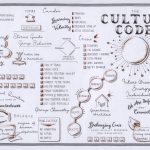OKRs and its Success


How do you measure the success of innovation at your company? New product revenue? How you measure innovation profoundly affects your innovation culture. For example, at a large software company that we worked with, every new business idea had to demonstrate in a business plan its potential to account for more than 100 million USD in revenue over a period of three years. As a result, new products were only launched in established markets, based on proven technologies for which such a potential could be demonstrated. More exploratory initiatives were clearly not desired from the perspective of the employees and only incremental innovation could ever be realized.
How you measure innovation also affects the relationship between units responsible for new, innovative and often digital business models and the legacy business which still produces the overwhelming share of revenue. How can the more exploratory units demonstrate their value so that mutual respect instead of envy develops between the two arms?
One of our culture practices for this topic of alignment is called flexible performance goals. Originally developed by Intel, this method quickly becomes a new standard for many of the most innovative companies in the world. In the attached document, you will find out how this method of controlling innovation works in practice.
Controlling innovation is a prism for your expectations of your employees: What behavior is rewarded at the end of the day? If you want an innovative culture, you need to set the right kind of incentives.
What exactly are flexible performance goals?
As already mentioned, they were originally developed by Intel in the 1980s. At that time, Intel was facing a significant challenge: develop a brand which can be characterized as a market leader or be eaten up by competitors. The idea to measure innovation through flexible performance goals initially came from Andy Grove (one of the co-founders of Intel). He was convinced that Intel would not be able to achieve a position as a market leader in the production of microchips by simply focusing on innovative technologies. More importantly, his focus was on the employees. His mindset of employees first automatically steered his attention towards the culture of the firm. He saw the biggest potential in his employees, as ultimately no innovation can be achieved without them. Intel’s overall situation back then is comparable to what many companies experience today: highly competitive markets, increasingly globalized supply chains, and high degrees of business complexity and dynamics.
Grove was confident that Intel needed to undergo a systemic change, especially regarding the measurement of innovation. Focusing only on management, who at that time used the “management by objectives” (MbO) approach, would no longer lead to success. But what was the alternative?
To achieve his goal he changed many aspects of the management approach: first, he eliminated yearly figures and substituted them by much more short-term target agreements (objectives). He then made sure all targets were completely transparent for all employees and therefore clearly defined and measurable (key results). This new, radical approach led to a mindset-change of the employees and ultimately changed the organizational culture, which turned out to be one of the main factors for sustainable success.
The rest is history! Most likely the computer or smartphone you are currently using to read this article makes use of an Intel processor.
In Intel’s case objectives and key results (so-called OKRs) were used for a company within the tech sector, where they are widely used for incumbents and startup companies. But this does not mean that it only works for such kind of companies. Today OKRs are, for example, used at Accenture, Adobe, Amazon, Deloitte, Facebook, GE, Google, GoPro, LG, LinkedIn, Microsoft, Netflix, Samsung, Siemens, Spotify and plenty more!
As you can see, OKRs are increasingly becoming standard worldwide. Their usage has been adapted to an environment of complexity in a rapidly changing world. Nowadays, one must apply an agile framework for agile work.
So what is it all about?
Objectives and key results are metrics that demonstrate how a business or team is meeting its objectives. First, you have to define your objectives. O’s answer the question “where do I want to go and what do I want to achieve?” They are completely qualitative. For instance, an objective could be defined as: “improve the new marketing process”. Objectives should be challenging but not impossible. Your workers should feel a little uncomfortable when the objectives are set, as it should be a bit tricky to achieve them. By setting challenging objectives, you will trigger more intense feelings if employees are able to meet the target. As a result, it will further motivate them.
Metrics that have been developed to measure learning, are just as important to innovative teams. Thus, OKRs go hand in hand with the culture of the organization. Furthermore, it is also important to be able to fail and learn from your mistakes – another important success factor, which has often been overlooked in companies and society as a whole. Ultimately by setting the right framework, your employees will push each other more and strive for success. The OKR framework is a continuous cycle of fast, dynamic growth. Besides for the optimization process being a great measurement tool, it also steers the employees’ focus in the needed direction. OKRs have to be implemented within the cultural framework of the organization, which in turn has to be gradually developed into a successful structure.
The next step is to define your key results. For every objective, you should be able to derive four key results which will allow for achieving it. If we take into account the above example of an objective, we could say, for instance, that some key results are: “develop personal relationships with five potential customers”, “increase lead generation by 10%”, “launch five webinars”. As you can see, unlike objectives (which are mainly qualitative), key results are completely quantitative and therefore measurable. You will be able to measure your key results on a scale from 0 to 100% or any numerical scale.
So what’s the difference between OKRs and MbOs/KPIs?
While KPIs are purely reality-based, OKRs introduce a factor of ambition (that’s why it is so important to set the objectives as challenging as possible but not impossible.) Through OKRs you are able to push yourself into the unknown, an area that is almost impossible to reach with KPIs (because they are just a measure for existing things). KPIs evaluate teams and business units based on how successful they are (or not), they change only slowly and do not embrace learning and failure.
Additionally, KPIs are mostly long-term oriented – yearly results for example. While OKRs are much more dynamic and can be adapted throughout the process. Normally objectives are set on a quarterly basis.
Which leads us to measuring, the next topic. After every quarter you should be able to measure the key result as well as to add new ones. For example: Have we been able to “increase lead generation by 10%?”.
Moreover, in contrast to MbOs, OKRs are much more transparent. Thus, the employees in question take part during the process of setting the objectives and key results. Everyone knows what the main objective is the company is working for. Only then can key results and objectives can be reached.
OKRs are an anchor for promoting innovative thinking. Changing the culture of a company is a process that supports OKRs. Ultimately, OKRs and the culture of a company correlate with each other positively. One of the drawbacks which hinders innovation is often the daily business. Employees find themselves in a position in which they struggle to decide between daily business and innovation. One of the main benefits of OKRs is flexibility. This kind of approach is, therefore, more suitable for a successful innovation culture. Furthermore, the key dimension of transparency is supported by an open and transparent communication of the OKRs to every employee. The company thus works as a whole to achieve its objectives because if the objectives are clear for everyone, employees will collaborate more with each other. Understanding the “big picture” is something which has often been undervalued, but is actually crucial for the motivation of employees. OKRs have to be lived and implemented by the entire company. By just setting some goals and letting the employees “do”, your goals will never be achieved truly. OKRs in their definition are very dynamic. Therefore it has to be ensured that the whole process is guided and controlled as well as that feedback is provided in a timely and constructive manner.
KPIs are a good measure for ongoing processes, but not for innovative goals where the final result often stays unclear throughout the agile innovation process.
To sum up, your Objectives and Key Results (OKR’s) and your culture of innovation will mutually benefit each other. By changing the culture inside your organization, you will able to change the mindset of your workers, which will eventually lead to higher employee engagement resulting in higher performance.
We hope that you will be able to improve your innovation culture further. For questions and comments, don’t hesitate to contact us!
Best,
Your IKN Team
Sources:
Burnette, K. (2018). OKRs and KPIs—Defining Metrics for Innovative Teams. Medium.
Rotzinger, J. (2018). Zielvereinbarungen im agilen Unternehmen – geht das überhaupt? New Management.


